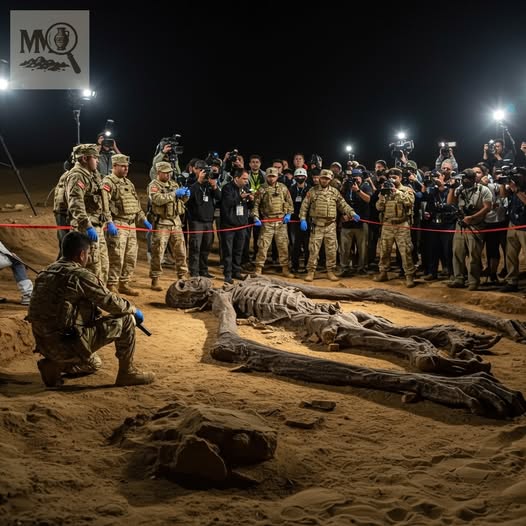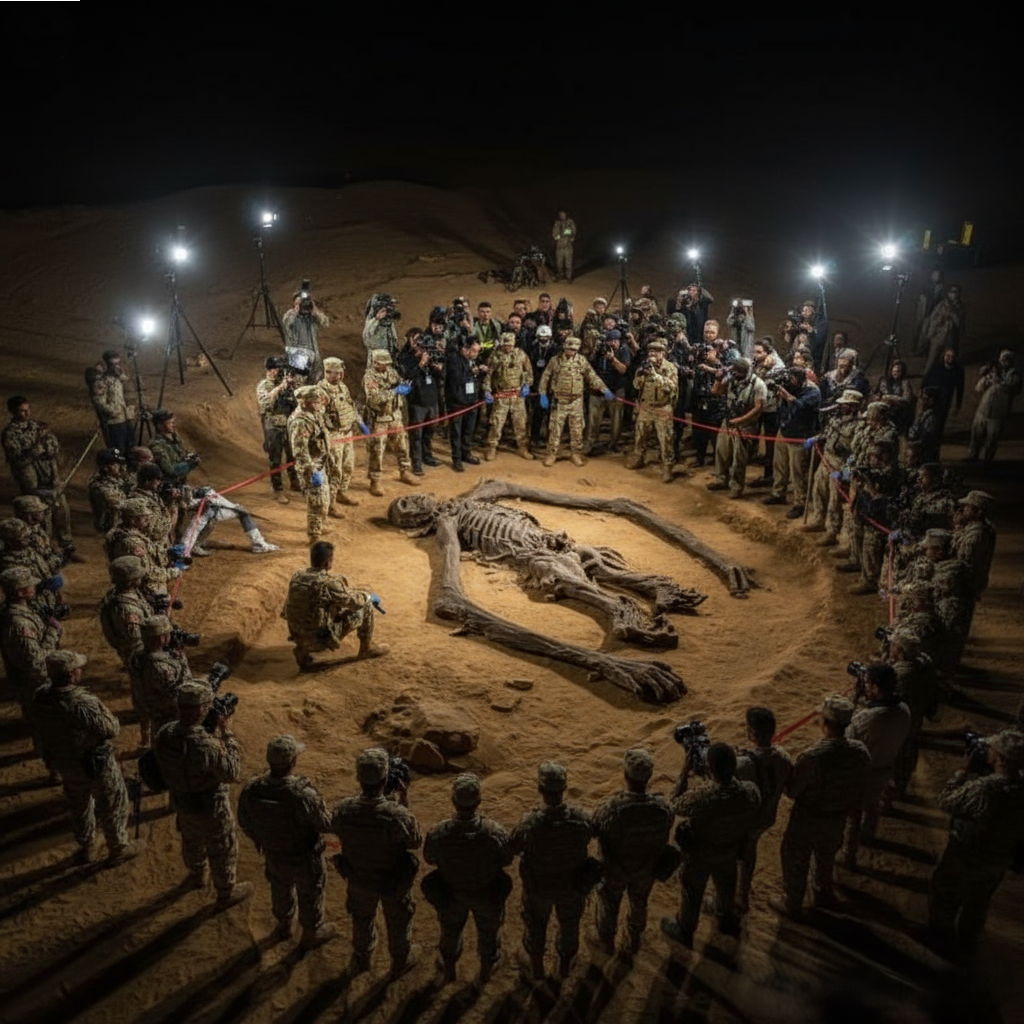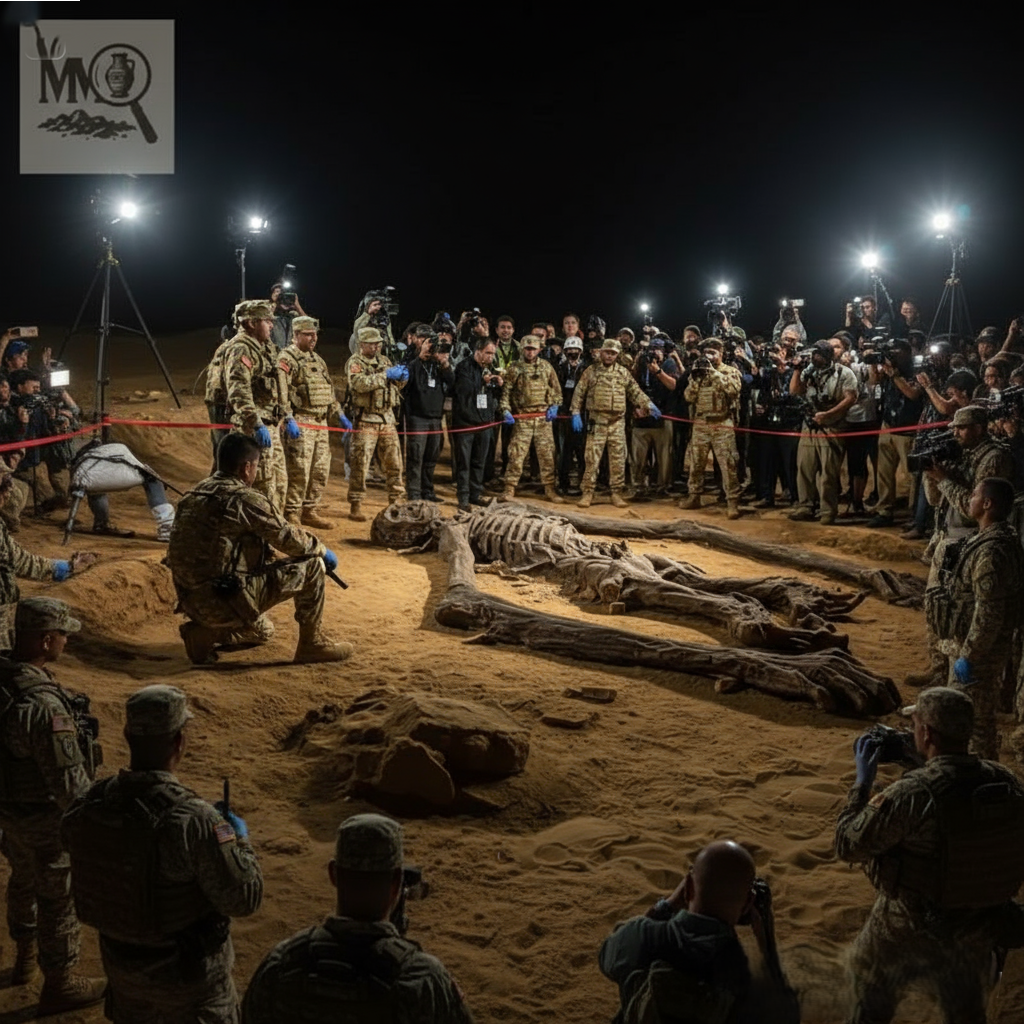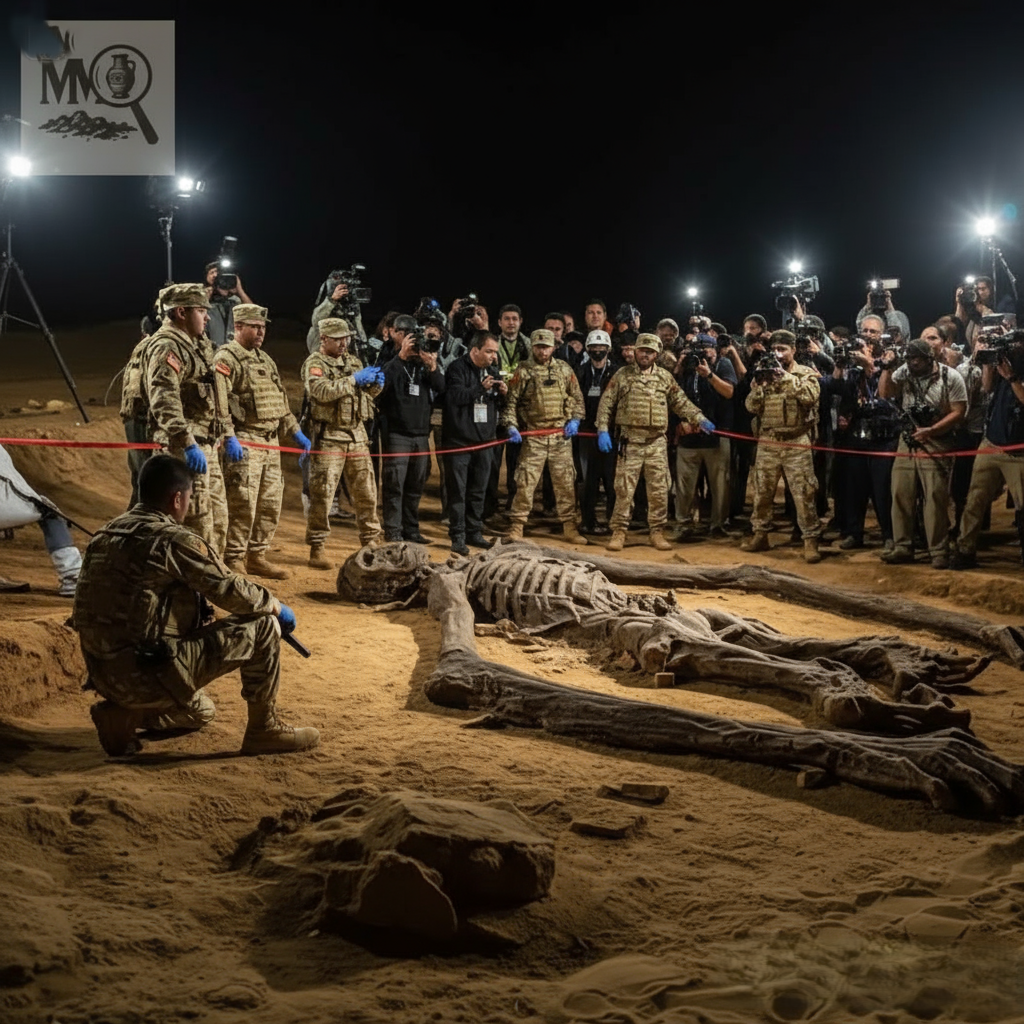Military Confirms Unearthing of Giant Humanoid Skeleton — The Discovery That Could Rewrite Human History
- Thuong
- October 10, 2025

Military Confirms Unearthing of Giant Humanoid Skeleton — The Discovery That Could Rewrite Human History
In a revelation that has ignited global controversy and fascination in equal measure, military officials have confirmed the recovery of what appears to be the enormous remains of a humanoid creature deep in a classified desert excavation zone. The skeletal structure—measuring more than three times the height of an average adult human—was reportedly uncovered during a geological survey before the site was abruptly placed under military control. Since then, every inch of the area has been illuminated by floodlights, guarded by armored vehicles, and patrolled by security personnel operating under strict silence orders.

Eyewitness accounts from nearby workers describe the moment the gigantic ribcage and skull were lifted from the sand — the bones gleaming under floodlights, eerily intact despite their immense age. Preliminary observations from off-record sources within the excavation team suggest the specimen is neither human nor animal as we know them; its skeletal proportions, particularly the elongated limbs and joint articulations, appear biomechanically unique. Within hours of the discovery, all footage, images, and data shared online were taken down, allegedly due to “national security concerns.”
The official statement released by the military labeled the find as “a geological anomaly pending analysis,” but the public remains unconvinced. Multiple journalists who attempted to access the site have reportedly been detained or barred, and several independent media outlets claim their published reports vanished from servers without explanation. Scientists who briefly examined preliminary photographs have hinted that the bone structure resembles descriptions of the “Nephilim,” the legendary giants referenced in ancient Hebrew and Mesopotamian texts said to have inhabited the Earth before the great cataclysms. “If this is authentic,” one anonymous researcher stated, “it could represent a direct link between mythology and an unrecorded chapter of prehistory.”

The silence from official channels has only fueled conspiracy theories. Some believe the discovery confirms long-whispered rumors of suppressed archaeological evidence — finds that would challenge mainstream narratives about human evolution and Earth’s timeline. Others suspect the remains are extraterrestrial in origin, linking them to unclassified objects and “ancient astronaut” hypotheses that have circulated for decades. What truly unsettles many observers, however, is the level of military involvement in what should be an academic investigation.
Social media has become a battlefield of speculation. Hashtags like #GiantRevelation, #HiddenHistory, and #NephilimTruth dominate global trends, while millions of users dissect blurred satellite images, leaked excavation clips, and eyewitness testimonies. Some claim to have seen convoys transporting massive crates from the site under the cover of darkness. Others insist that global institutions are working to suppress the implications of the find before it reaches the public domain.

If proven authentic through carbon dating and forensic analysis, this discovery could shatter our understanding of the human story. The implications stretch beyond science—touching on religion, history, and even geopolitics. Were these colossal beings the ancestors of humankind, or a parallel species erased by catastrophe or design? Why does the military maintain absolute control over a find of potential world heritage significance?
Until verified data is released, the world remains suspended between disbelief and awe. The desert skeleton stands as a mute witness to a hidden epoch, buried beneath centuries of sand and secrecy. For now, the truth lies somewhere between the classified reports and the silence of those who have seen it — a silence that only deepens the mystery of what, or who, humanity may once have shared this planet with.







